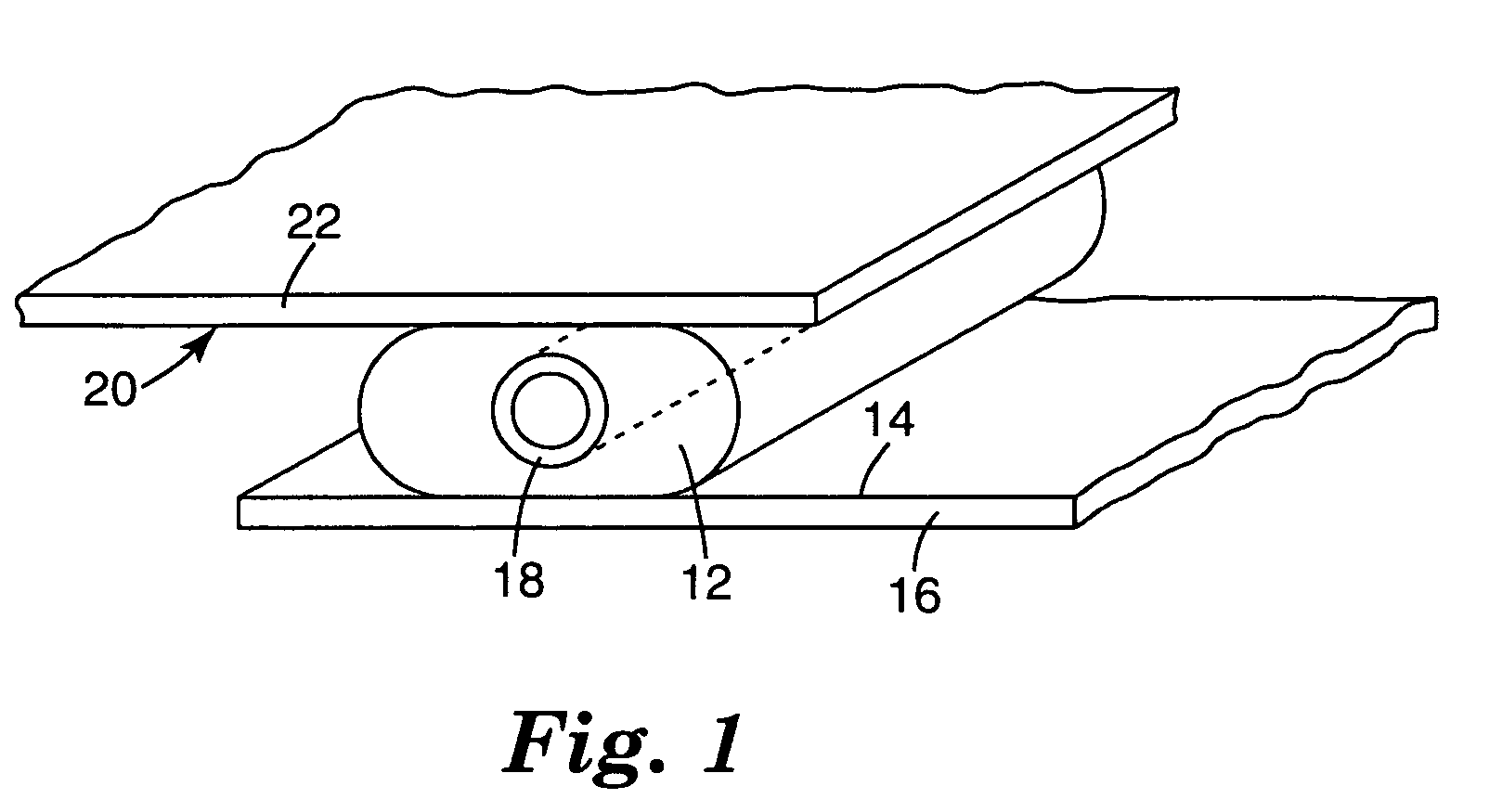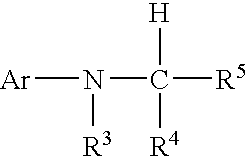Method of curing using an electroluminescent light
- Summary
- Abstract
- Description
- Claims
- Application Information
AI Technical Summary
Benefits of technology
Problems solved by technology
Method used
Image
Examples
example 1
[0075] A curable composition was prepared as follows. A base solution was made by mixing together using a spatula in a black plastic container: 50 parts by weight CR1 and 50 parts by weight CR2. To this mixture was added 0.25 parts by weight SN1, 0.5 parts by weight PI1, 0.75 parts by weight PI3, 0.05 parts by weight DYE1, and 5 parts by weight FS.
[0076] The composition was stored in a lightproof container and had a paste-like consistency.
[0077] A 1-inch (2.54 cm) by 4-inches (10.16 cm) piece of sheet steel, coated with electro-deposited epoxy primer, commercially available under the trade designation “ACT COLD ROLLED STEEL 04X12X032 B952 P60 DIW: UNPOLISHED E-COAT: ED5000” from ACT Laboratories, Inc., Hillsdale, Mich. was laid on a flat surface. With room lights off a portion of the curable composition was applied to the sheet steel using a spatula.
[0078] A 15 foot (4.5 meter) electroluminescent light fiber, 2.3 millimeters outside diameter, having a peak emission at approximate...
example 2
[0081] Six sandwich bonds were prepared as described Example 1, except the electroluminescent light source used was a 2.3 mm outside diameter by approximately Imeter long NEW BLUE EL light fiber, from ELAM, Inc., at a power of 140 VAC at 10 kHz. Results are tabulated in Table 2.
TABLE 2Total Illumination Time,Net Cure Depth,minutesTotal Width of Cure, mmmm155.721.71306.251.975607.822.76958.653.1751208.693.1951508.853.275
[0082] The above data show increased cure depth in the curable resin over time as compared to Example 1.
example 3
[0083] A base solution was made by mixing together using a spatula in an opaque plastic container 9 grams CR3 and 1 gram CR4. To this mixture was added 0.05 grams SN1, 0.015 grams ED1, 0.01 grams DYE2, and 0.20 grams PI2 to form a slightly orange colored fluid mixture.
[0084] Approximately 1 milliliter of this mixture was placed in a small glass vial of about 1.2 cm. inside diameter. The free end of an approximately 1.2 m long by 1.2 mm outside diameter electroluminescent light fiber, commercially available as HI-BRITE BLUE, from ELAM, Inc., was positioned vertically in the fluid and held in place at a temperature of 72° F. (20° C.) with a clamping fixture. The EL fiber was powered with 212 volts AC at approximately 21 kHz, and produced 13.3 Lux of light per centimeter of length. A layer of curing epoxy formed around the wire immersed in the mixture. The diameter of this curing layer was measured at various times of illumination, The results are listed in Table 3.
TABLE 3Total Illu...
PUM
| Property | Measurement | Unit |
|---|---|---|
| wavelength | aaaaa | aaaaa |
| wavelength in the range | aaaaa | aaaaa |
| wavelength | aaaaa | aaaaa |
Abstract
Description
Claims
Application Information
 Login to View More
Login to View More - R&D
- Intellectual Property
- Life Sciences
- Materials
- Tech Scout
- Unparalleled Data Quality
- Higher Quality Content
- 60% Fewer Hallucinations
Browse by: Latest US Patents, China's latest patents, Technical Efficacy Thesaurus, Application Domain, Technology Topic, Popular Technical Reports.
© 2025 PatSnap. All rights reserved.Legal|Privacy policy|Modern Slavery Act Transparency Statement|Sitemap|About US| Contact US: help@patsnap.com



